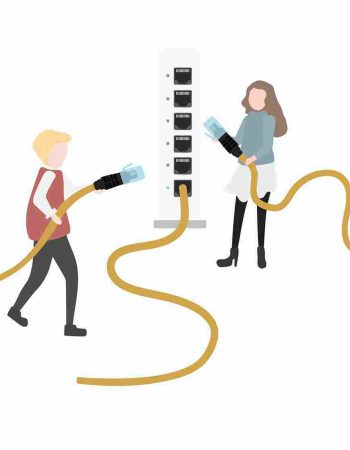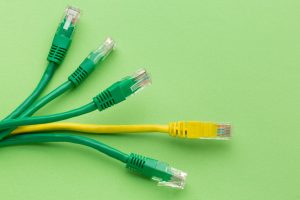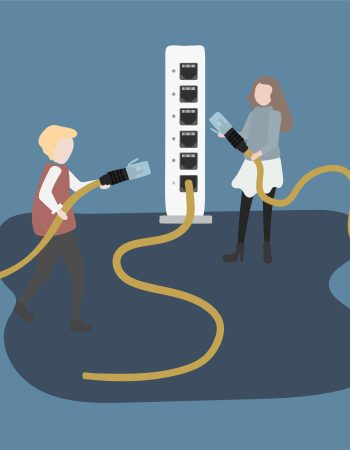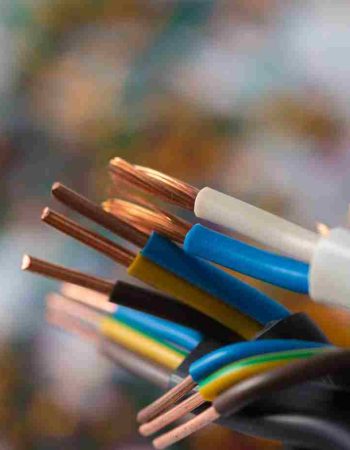In the world of telecommunications and networking, COAX cables play a crucial role. Whether you’re setting up a home entertainment system, enhancing your internet connectivity, or managing complex communication networks, understanding COAX cable solutions can significantly impact the performance and reliability of your setup. In this blog, we will delve into the essentials of COAX cables, their applications, types, and how to choose the right one for your needs.
What is a COAX Cable?
COAX, or coaxial cable, is a type of electrical cable that consists of a central conductor, an insulating layer, a metallic shield, and an outer insulating layer. This unique construction allows COAX cables to transmit high-frequency signals with minimal interference, making them ideal for various applications, including television broadcasting, internet connections, and telecommunications.
Key Components of COAX Cables
- Inner Conductor: Typically made of copper or aluminum, this central wire carries the electrical signal. Copper is preferred for its superior conductivity, while aluminum is lighter and less expensive.
- Dielectric Insulator: Surrounding the inner conductor, this insulator keeps the signal contained within the core and prevents signal loss. It is typically made from materials like polyethylene or foam.
- Metallic Shield: A woven copper braid or aluminum foil that shields the signal from external electromagnetic interference (EMI). This layer is crucial for maintaining signal integrity over long distances.
- Outer Insulation: The protective outer layer that safeguards the cable from physical damage and environmental factors such as moisture and UV radiation. This layer is typically made from PVC or another durable plastic.
Also Read: The Ultimate Guide to Choosing the Right Data Network Cables for Your Network Needs
Applications of COAX Cables
COAX cables are versatile and find applications in various fields:
- Television and Cable TV: Used to deliver television signals from the service provider to your home. COAX cables are essential for ensuring high-quality audio and video signals.
- Internet Connectivity: Essential for connecting modems and routers to provide high-speed internet access. Many broadband services rely on COAX cables to deliver reliable internet connections.
- Radio Communications: Employed in amateur radio, CB radio, and other wireless communication systems. COAX cables help transmit and receive radio signals with minimal interference.
- Security Systems: Used in CCTV and surveillance systems to transmit video signals. COAX cables are preferred for their ability to maintain signal quality over long distances in security applications.
- Medical Equipment: Vital in transmitting signals for medical imaging and diagnostic equipment. COAX cables are used in equipment like MRI machines and ultrasound devices for their reliability and clarity.
Benefits of Using COAX Cables
COAX cables offer several advantages over other types of cables, including:
- High Bandwidth: Capable of transmitting large amounts of data at high speeds, making them ideal for internet and television services.
- Durability: Robust construction makes them resistant to physical damage and environmental factors, ensuring a long lifespan.
- Low Interference: Effective shielding reduces electromagnetic interference, ensuring a clear signal and reliable performance.
- Versatility: Suitable for a wide range of applications from home use to industrial installations, making COAX cables a versatile choice for various needs.
Choosing the Right COAX Cable
Selecting the appropriate COAX cable depends on several factors, including the application, distance, and environmental conditions. Here are some tips to help you choose the right COAX cable:
- Identify Your Needs: Determine the specific requirements of your application. For instance, use for home television and internet, for longer runs or professional setups where signal quality over distance is crucial.
- Consider Distance: For longer distances, choose a cable with a lower signal loss to maintain signal quality. The thicker the cable, the better it will be at preserving signal strength over long runs.
- Check Compatibility: Ensure the connectors and cable type are compatible with your devices. Different devices may require specific types of connectors.
- Evaluate Environmental Factors: For outdoor or harsh environments, select cables with additional protective layers or weather-resistant features. UV-resistant outer insulation and moisture-proof coatings can extend the life of your cables in challenging conditions.
Installing COAX Cables
Proper installation is crucial for optimal performance. Here are some installation tips:
- Avoid Sharp Bends: Bending the cable too sharply can damage the inner conductor and insulator, leading to signal loss. Use cable clips or guides to ensure gentle curves.
- Use High-Quality Connectors: Invest in good-quality connectors to ensure a secure and reliable connection. Poor-quality connectors can lead to signal degradation and connection issues.
- Minimize Interference: Keep COAX cables away from power lines and other sources of electromagnetic interference. Routing cables through separate conduits or using shielding can help reduce interference.
- Secure the Cable: Use cable clips or ties to secure the cable and prevent it from moving or getting damaged. Properly securing the cable will prevent wear and tear and reduce the risk of accidental disconnection.
Troubleshooting Common Issues
Even with proper installation, you may encounter issues with your COAX cable setup. Here are some common problems and solutions:
- Weak Signal: Check for loose connections or damaged cables. Replacing connectors or the cable itself may resolve the issue. Ensure that all connections are tight and secure.
- Interference: Ensure the cable is adequately shielded and away from sources of EMI. Consider using a cable with better shielding if necessary. Ferrite beads or chokes can also help reduce interference.
- Physical Damage: Inspect the cable for cuts, kinks, or other physical damage and replace it if needed. Physical damage can cause signal loss and reduce the overall performance of your system.
Conclusion
COAX cable solutions are integral to various communication and entertainment systems. Understanding the different types, applications, and proper maintenance can significantly enhance the performance and longevity of your COAX cables. Whether you’re setting up a new system or troubleshooting an existing one, following the tips and guidelines in this guide will help ensure you get the most out of your COAX cable investment.
By staying informed about the latest advancements and best practices in COAX cable technology, you can optimize your setup and enjoy reliable, high-quality signal transmission for all your communication and entertainment needs.






